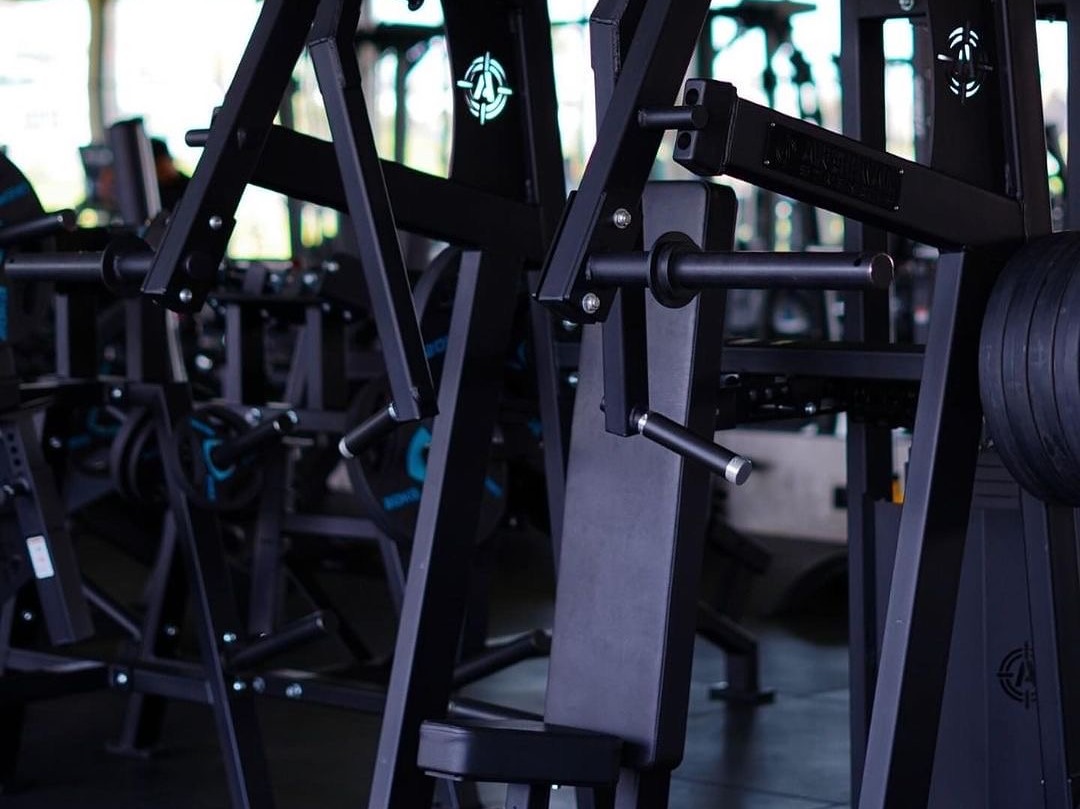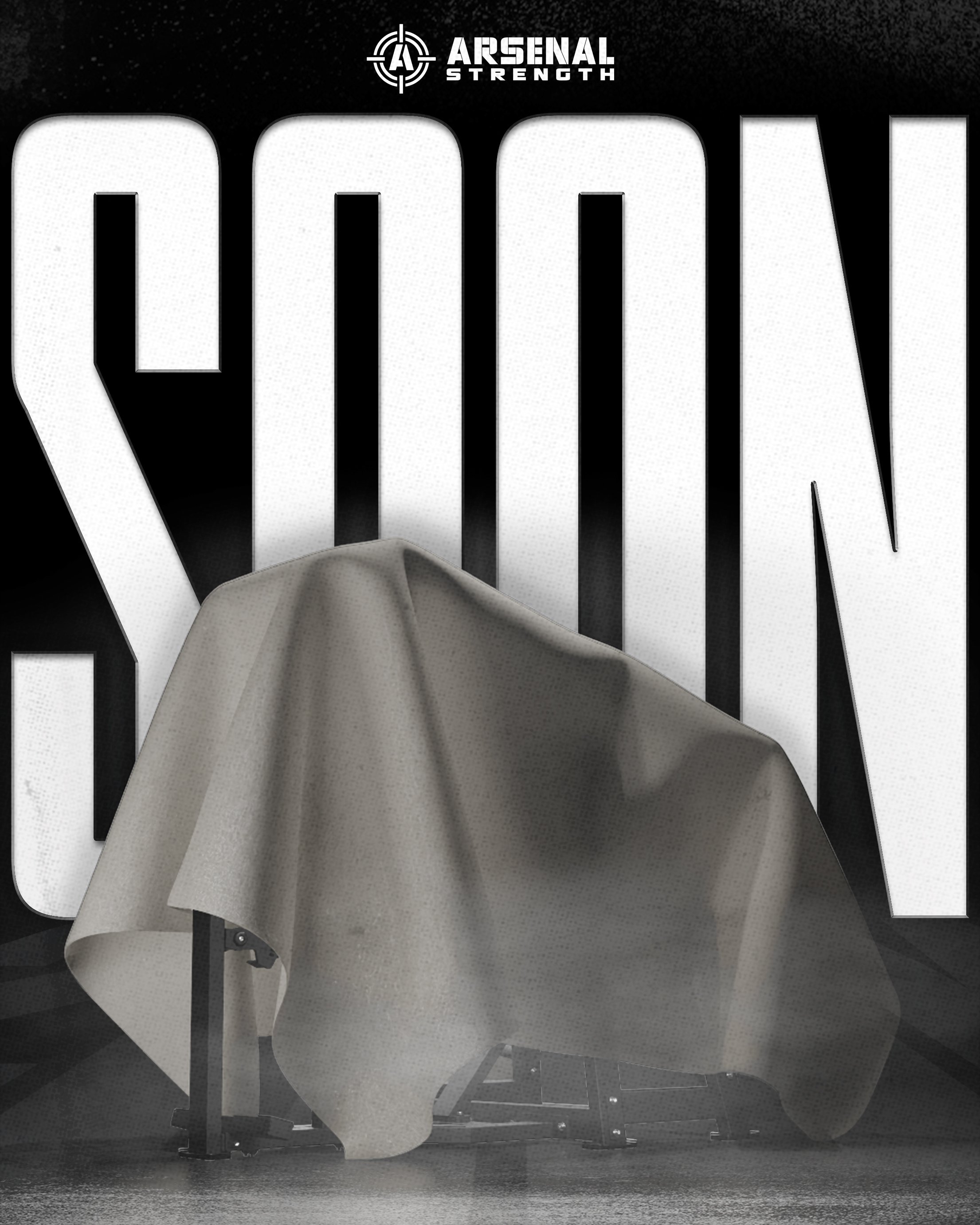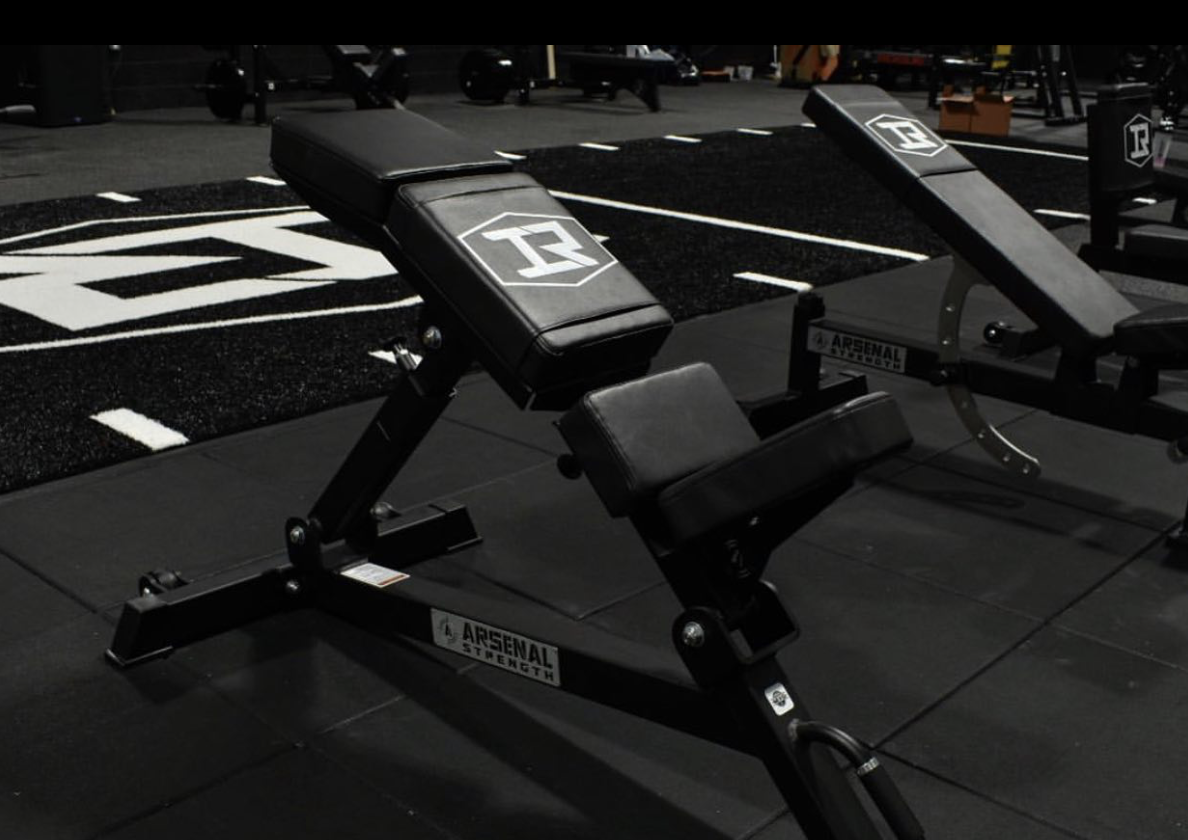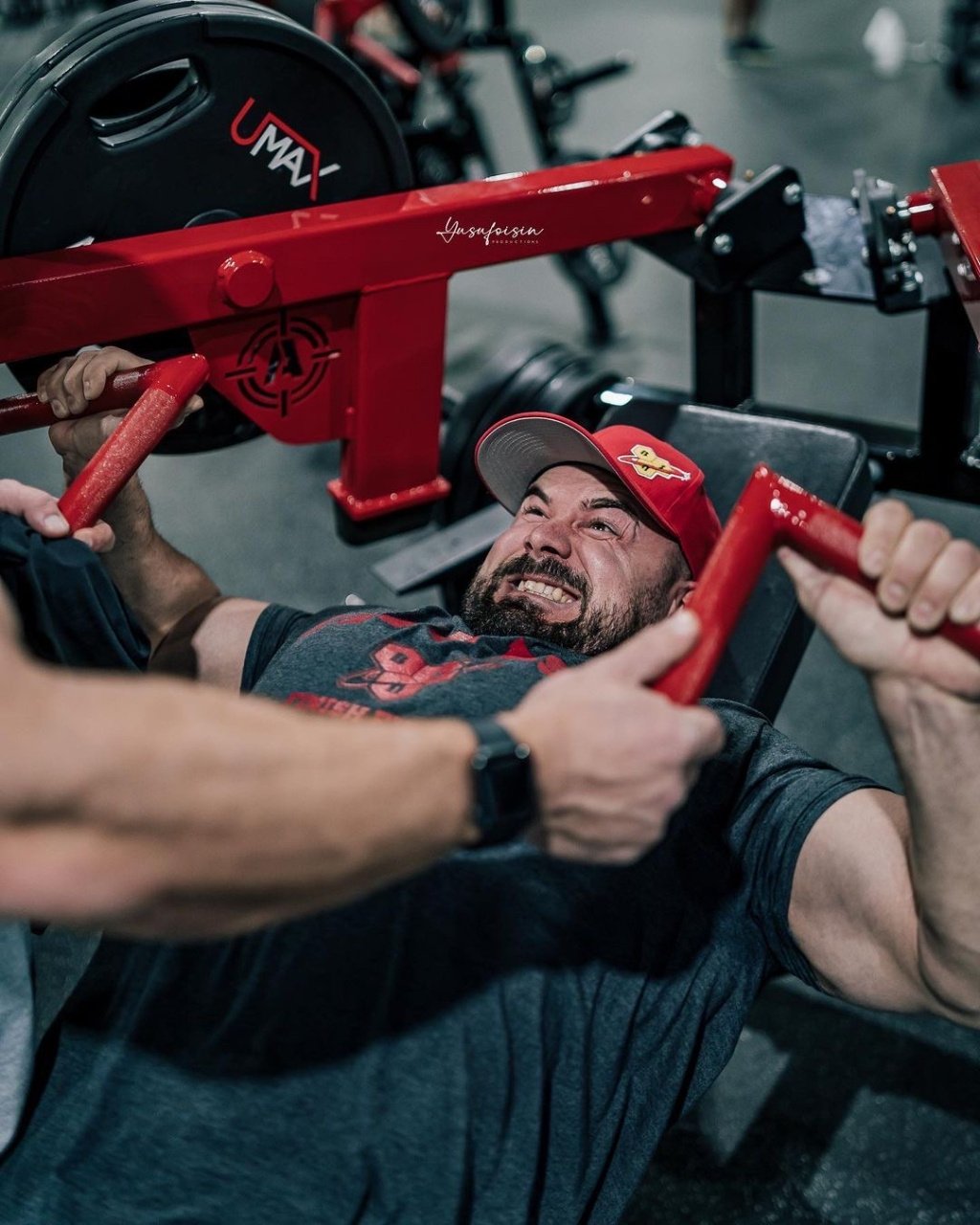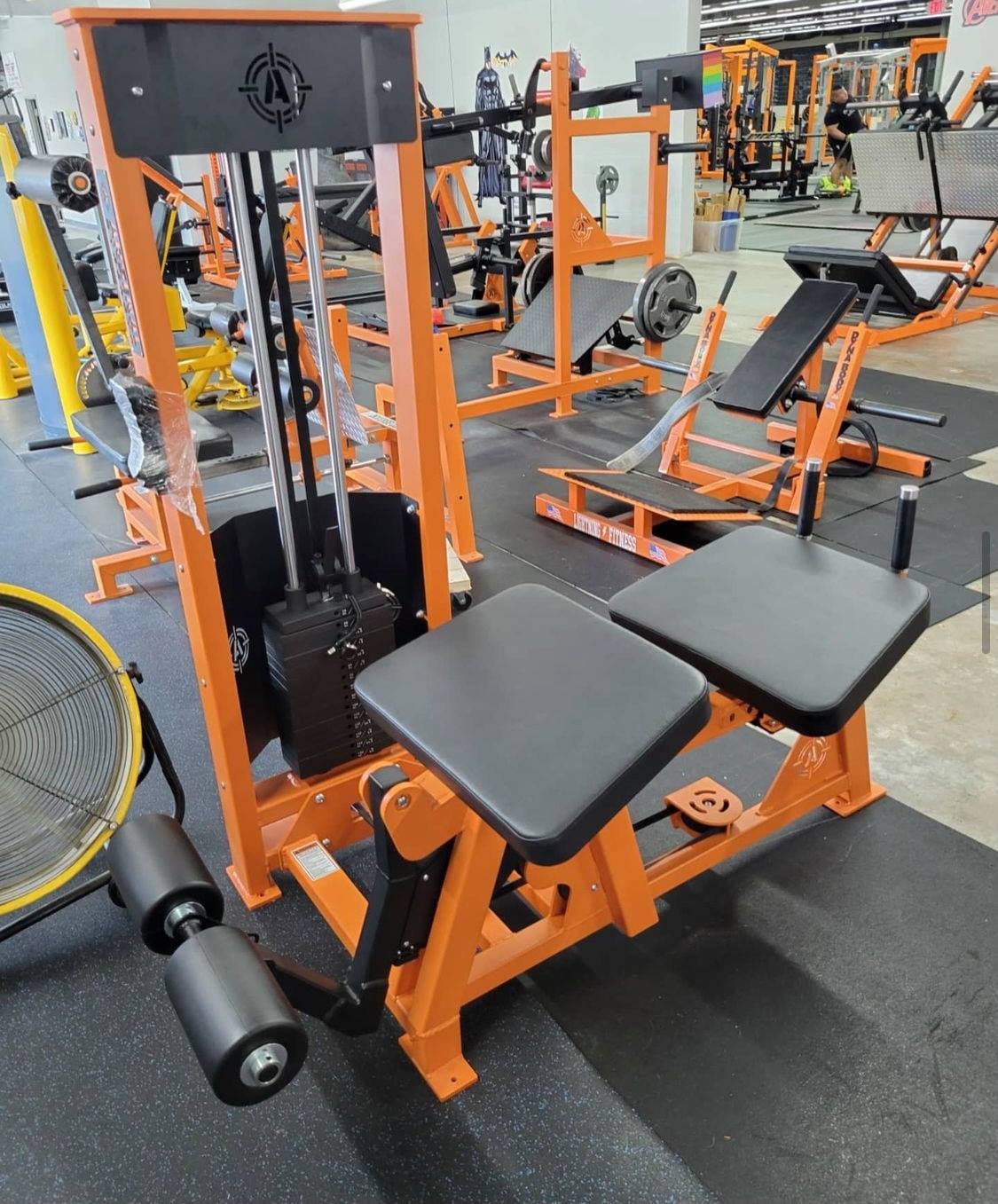Maximize Your Strength with the Plate Loaded Chest Press
In the realm of strength training, an exercise that stands out for its effectiveness and versatility is the plate loaded chest press. It is a tool that not only builds and strengthens your muscles but also allows you to take control of your fitness journey. This machine, meticulously engineered for maximum muscle engagement, offers a diverse array of exercises targeting both the upper and lower chest muscles.
Key Takeaways
- The Plate Loaded Chest Press Machine by Prime Fitness USA offers customizable features to maximize strength training and muscle growth.
- The machine targets the pectoralis major, deltoids, triceps and biceps for improved posture, cardio health and injury prevention.
- Following professional guidance with proper form is key for effective plate loaded chest press workouts.
Unlocking the Power of Plate Loaded Chest Press
Step into a gym and discover a machine that grants you superior control over your workouts - the plate loaded chest press machine. This distinctive apparatus leverages weight plates for resistance, instead of a fixed weight stack, offering flexibility and progression in weight. The additional features such as 3 back pad adjustments, 2 grip options, and Smart Strength Technology ensure a comprehensive and efficient workout experience.
This innovative machine offers:
- Increased control over your workouts
- Transformation of your approach to strength training
- Strengthening of your chest
- Enhancement of your overall fitness
- A tailored workout experience that fits your needs and goals.
Defining Plate Loaded Chest Press
A plate loaded chest press machine is a finely-tuned fitness device engineered for bolstering chest muscles. It’s ideal for sports enthusiasts and athletes who are keen on improving their upper body strength. The functioning of this machine is rather simple. The machine operates by enabling you to incorporate weight plates to create resistance. As you push the movement arms forward to engage your chest muscles, they can then be lowered back to the initial position. This machine facilitates a more natural range of motion and aids in isolating and strengthening the chest muscles.
What sets this machine apart from other chest press machines is its utilization of weight plates as resistance instead of a fixed weight stack. This feature provides more flexibility and advancement in weight. Additionally, it typically features a pivot point positioned above you, altering the movement angle and targeting your muscles differently. This unique feature makes it a preferred choice for those who seek to have more control over their workouts.
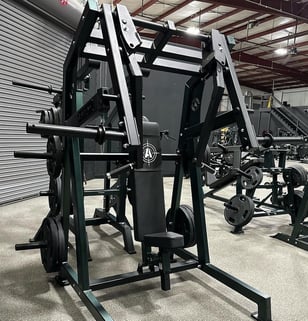
Benefits of Plate Loaded Chest Press
Integrating plate loaded chest press into your fitness routine can yield a multitude of health benefits, including:
- Stimulating muscle growth
- Enhancing strength
- Improving muscular endurance
- Reducing the risk of injury
- Improving cardiovascular health through increased heart rate and calorie burn
- Engaging multiple muscle groups, enabling them to function more effectively over time.
The advantages of a plate loaded chest press include:
- Muscle development in the chest, shoulders, and upper back
- Improved body posture
- Increased overall upper body strength and stability
- Beneficial for those with prolonged sitting habits or a tendency to slouch
For bodybuilding enthusiasts, the targeted development of chest muscles and the engagement of other crucial upper body muscles make this machine an integral part of their training regimen.
Key Components of a Chest Press Machine
A plate loaded chest press machine is complex and composed of many diverse components, each performing a distinct function. The essential components include:
- Weight horns or pins
- Back pad adjustments
- Movement arms
- Handles
The bench plays a crucial role, providing necessary support and stability, ensuring proper form and alignment. This facilitates effective targeting of the pectoral muscles, deltoids, and triceps during the exercise.
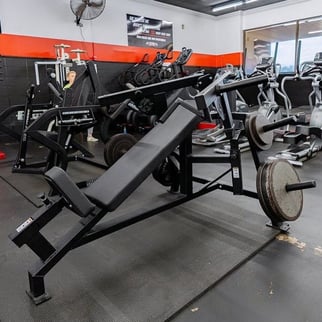
The core of a plate loaded chest press machine lies in the weight plates that render resistance to the movement. It gives you the ability to customize the level of resistance by adding or removing weight plates according to your strength and fitness objectives. These weight plates are loaded onto the machine’s weight horns or pegs.
The movement and control mechanism of a chest press machine offers several benefits:
- Ensures fluid and controlled motion
- Enables a deep stretch across the chest
- Promotes optimal contraction of the chest muscles
- Allows for lifting heavier weights with enhanced control
- Provides a safe and efficient workout experience.
Weight Plates: The Foundation of Strength
Weight plates constitute the essence of a plate loaded chest press machine. These disk-shaped objects, typically made of iron or rubber, create resistance during workouts, thereby aiding in the development of muscle and strength. They impact strength training by providing additional resistance to exercises, which results in enhanced muscle strength and stimulates muscle growth. The increased weight makes the exercises more demanding, prompting your muscles to exert more effort, ultimately leading to improvements in strength and overall muscle development.
The use of varying weights during chest press exercises can result in diverse levels of muscle activation and development. Heavier weights typically lead to more intense activation of the agonist and synergist muscles, thereby contributing to enhanced muscle growth and strength. When choosing suitable weight plates, it’s important to consider factors such as:
- Material
- Weight tolerance
- Size
- Personal fitness objectives
- Compatibility with your equipment.
Motion and Control: Perfecting Your Form
Maintaining the correct form is crucial for any successful workout, including the plate loaded chest press. The recommended technique involves:
- Lying on a bench or the floor with a dumbbell in each hand.
- Positioning the dumbbells at the shoulders with the upper arms at about 45 degrees to the body.
- Ensuring that the chest muscles are properly engaged to maximize exercise effectiveness.
Keeping control while employing a plate loaded chest press machine is vital. It ensures proper form and technique, minimizes the risk of injury, and facilitates targeted muscle engagement.
One should be mindful of common errors in form and control during chest press exercises. These include allowing elbows to flare out, wrists rolling back, the bar hitting too high on the chest, and using an improper grip width. These errors can impede stabilization and muscle engagement, and elevate the risk of injury. To enhance control during chest press exercises, it’s recommended to focus on proper form, start with lighter weights, execute deliberate and measured movements, activate the core, and train with dumbbells.
Main Muscle Groups Targeted by Plate Loaded Chest Press
The plate loaded chest press machine goes beyond just amplifying strength; it zeroes in on particular muscle groups for optimal development. The primary muscle group focused on in plate loaded chest press exercises is the pectoralis major, which consists of the chest muscles. This exercise is beneficial for building and strengthening the chest muscles, and it is considered crucial for chest development.
While the primary focus is on the pectoralis major, the plate loaded chest press also involves secondary muscle groups such as:
- the shoulders (deltoids), which play a significant role in moving the arms and stabilizing the shoulder joint
- the triceps, which provide assistance during the exercise
- the biceps, which contribute by providing assistance in shoulder stabilization and additional support during the pressing motion, although they are not the primary muscles being worked.
Building a Stronger Chest
Employing a plate loaded chest press machine is a potent method for cultivating a stronger, more chiseled chest. This exercise primarily targets the pectoral muscles, deltoids, and triceps, which play a crucial role in enhancing chest strength. Techniques and variations such as:
- Seated Chest Press
- Dumbbell Chest Press
- Decline Chest Press
- Paused Bench Press
- Eccentric Overload Chest Press
are considered highly effective for chest muscle development.
Consistently engaging in plate loaded chest press exercises can result in substantial growth and development in the chest muscles, particularly the pectorals, while simultaneously fortifying the deltoids and other upper body muscles. To optimize chest strengthening, it’s recommended to perform plate loaded chest press exercises 2-3 times per week, with 48-72 hours of rest between sessions to facilitate muscle recovery and growth.
Strengthening Shoulders and Biceps
While the plate loaded chest press is known for targeting the chest muscles, it also provides an effective workout for the shoulders. The exercise primarily targets the anterior deltoids among the shoulder muscles. Performing the movements required in this exercise improves overall upper body strength, including synergistic strengthening of muscles in the chest and shoulders.
The biceps, while not the primary movers, are engaged in the pushing and lifting motions involved in the exercise. They play a role in stabilizing the shoulders and elbows during the plate loaded chest press. Specific variations of the plate loaded chest press, such as the seated chest press and the dumbbell chest press in a neutral position, are known to prioritize the activation of the shoulders and biceps.
Customizing Your Chest Press Experience
Among the standout benefits of the plate loaded chest press machine are:
- Customization possibilities, from color choices to additional features
- Tailored options that can be personalized to your preferences
- A workout experience that is uniquely yours
Digital displays improve the workout experience by offering:
- Real-time feedback on important metrics such as heart rate, reps, and weight
- Enhanced engagement and informativeness of the workout
- Interactive workout programs and demonstrations, which can boost motivation and ensure the correct exercise form for safety and efficacy.
Certain chest press machines, such as the Plate Loaded Chest Press by Prime Fitness USA, are equipped with integrated sound systems. Listening to music or other audio content during a workout can contribute to a more pleasant workout environment, potentially leading to increased enjoyment and improved workout performance.
Color Options: Making Your Machine Stand Out
Color significantly influences the visual allure of workout equipment. Different colors evoke various emotions and moods, thus affecting how individuals perceive and interact with the equipment. For instance, black is commonly associated with a classic and timeless aesthetic, while colors such as orange, red, yellow, blue, and green have the potential to energize and motivate.
Studies suggest that the color of fitness equipment can sway motivation and performance. For instance, yellow has been found to elevate mood and increase energy, while blue can enhance productivity and spur individuals to find more engagement in gym activities.
Color customization has the potential to improve the user experience by enabling individuals to pay attention to details and:
- Tailor the chest press machine to their specific preferences
- Foster a sense of ownership and satisfaction
- Potentially increase user motivation for regular use.
Additional Features: Enhancing Your Workout
Plate loaded chest press machines also offer additional features that can notably augment your workout experience. Adjustable features like seat and arm positions enable a customized workout experience that can effectively target different areas of the chest and engage various muscle fibers. These adjustments facilitate finding the optimal position for exercise, leading to a challenging workout that can stimulate muscle growth.
The ability to modify resistance and range of motion on a plate loaded chest press machine allows users to specifically target muscle groups like:
- the pectorals
- biceps
- deltoids
- latissimus dorsi
The stability and secure design of plate loaded chest press machines contribute to workout safety by reducing the risk of injury. These machines support the back and shoulders, allowing users to focus on the chest muscles without having to worry about balance, which ultimately enhances the safety of the workout routine.
Tips for Effective Plate Loaded Chest Press Workouts
To fully benefit from your plate loaded chest press workouts, it’s imperative to adhere to some expert guidance. Professional recommendations for maintaining correct form and technique during plate loaded chest press workouts include:
- Focusing on proper form by adjusting the seat to align the handles with the middle of your chest
- Keeping your upper arms at about a 45-degree angle to your body
- Pressing up powerfully while driving your shoulders into the bench
- Avoiding common mistakes like lifting too much weight or using an incorrect arm path.
The recommended approach for determining the appropriate starting weight for plate loaded chest press exercises is to select a weight that challenges but can be managed for 8-12 repetitions with proper form. Subsequently, the weight can be gradually increased as strength improves. To progress to heavier weights, you can increase the number of reps before adding more weight to the barbell, incorporate resistance bands for an additional challenge, and emphasize sets with heavier weights.
Finding the Right Weight
Choosing an appropriate weight is vital for successful chest press workouts. Here are some guidelines to help you select the right weight:
- Choose a weight that enables the completion of the first set of 10 repetitions with moderate difficulty.
- Use the ‘2 for 2’ rule to determine the most suitable weight increment progression for plate loaded chest press workouts. This rule suggests increasing the weight when two additional reps can be completed with the current weight compared to the previous workout.
- If the last set felt relatively easy, consider adding 5 pounds.
- If the last set felt challenging, add 2.5 pounds.
By following these guidelines, you can ensure that you are using the appropriate weight for your chest press workouts.
It is advisable to make incremental increases in weight until you are able to complete eight to twelve reps with proper form when performing plate loaded chest press workouts. As you develop muscle strength, you can progressively raise the weight.
Proper Form and Technique
Preserving the right form and technique is essential for a productive plate loaded chest press session. The recommended guidelines for performing a plate loaded chest press involve:
- Sitting on the bench with feet flat on the ground and back pressed firmly against the bench.
- Grasping the handles of the plate loaded machine with an overhand grip, slightly wider than shoulder-width apart.
- Lowering the handles towards the chest, keeping elbows slightly bent and wrists in line with forearms.
- Pushing the handles away from the chest, extending arms fully but without locking the elbows.
- Repeating the movement for the desired number of repetitions, maintaining control and stability throughout.
One should be mindful of common errors in form and control during chest press exercises. These include:
- Allowing elbows to flare out
- Wrists rolling back
- The bar hitting too high on the chest
- Using an improper grip width
These errors can impede stabilization and muscle engagement, and elevate the risk of injury.
To enhance control during chest press exercises, it’s recommended to:
- Focus on proper form
- Start with lighter weights
- Execute deliberate and measured movements
- Activate the core
- Train with dumbbells
Progressing with Heavier Weights
Advancing to heavier weights is an inherent aspect of any strength training regimen. It’s recommended to consider increasing the weight for your chest press workouts when:
- the final reps start to feel easier
- you can maintain good speed
- you can complete your sets with proper form
- you can complete your sets without excessive fatigue
Increasing weight in plate loaded chest press exercises can result in:
- Increased muscle strength
- Muscle hypertrophy
- Improved muscular endurance
- Enhanced overall performance in other upper-body exercises
It’s recommended to increase the weight gradually, typically suggesting an increase of 10 to 15 pounds per month for novice lifters.
Safety is paramount when lifting weights. Follow these guidelines to prevent injuries:
- Ensure that the weights are securely in place.
- Start with a manageable amount of weight and gradually increase it.
- Maintain proper form throughout the exercise.
- Pay attention to your body’s signals and stop if you feel any pain or discomfort.
By following these tips, you can safely and effectively incorporate weightlifting into your fitness routine.
In conclusion, the plate loaded chest press machine is an invaluable tool for strength training. By targeting the chest, shoulders, and biceps, it offers a comprehensive workout that aids in muscle growth and strength. With its customizable features, the machine ensures a comfortable and personalized workout experience. By adhering to proper form and technique, gradually increasing weights, and maintaining a regular exercise regimen, you can maximize the benefits of your workouts. So, are you ready to unlock the power of plate loaded chest press and take control of your fitness journey?
Frequently Asked Questions ABOUT the plate loaded Chest Press
What is the plate loaded chest press good for?
The Watson Plate Load Chest Press is an ideal machine for developing the chest, deltoids, triceps, serratus anterior and biceps muscles. It can be used to target all areas of the mid/upper chest with smooth movement, regardless of how much weight is being pressed.
Are plate presses good for chest?
Plate presses are a simple and effective exercise for developing the chest, shoulder, tricep and core muscles. They involve raising a weight plate in front of the chest, similar to a front plate raise.
Is there a difference between chest press and bench press?
There is a key difference between chest press and bench press, namely that the chest press is performed with a fixed resistance machine in a fixed movement path, whereas the bench press is done using free weights in a non-fixed range of motion. Both exercises are compound movements, however.
How heavy should I chest press?
For a man weighing 170 lbs, aim to bench press your body weight as a starting point. For a woman weighing 140 lbs, aim for 70-105 lbs.
What is a plate loaded chest press machine?
A plate loaded chest press machine is a specialized fitness equipment designed for building chest muscles. It allows users to add weight plates for resistance and provides a natural range of motion to effectively target the chest area.
Additional Resources:
Bilateral Leg Press: https://www.youtube.com/watch?v=0FOAfwG8lCI
Pendulum Squat Machine: https://www.youtube.com/watch?v=jnWgrCYSVLM
Belt Squat Machine: https://www.youtube.com/watch?v=7l1kU5j6Shk

